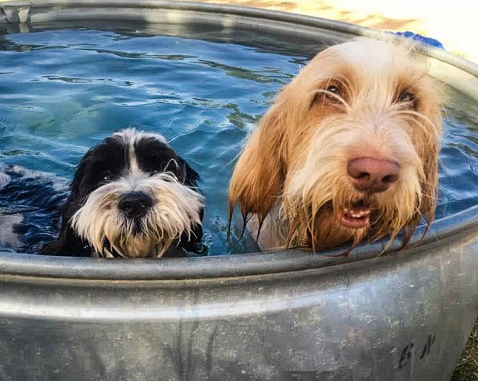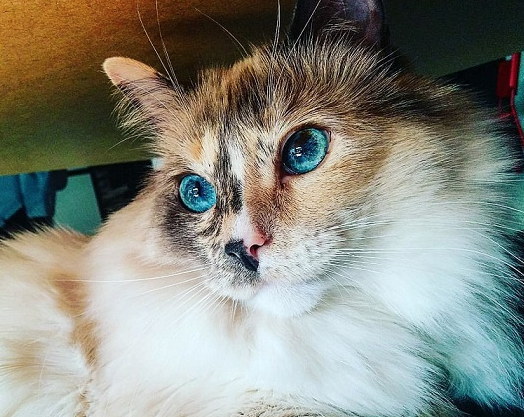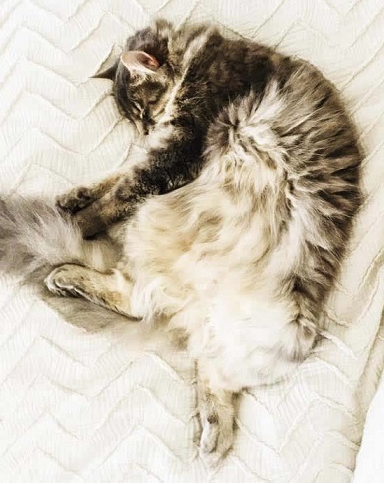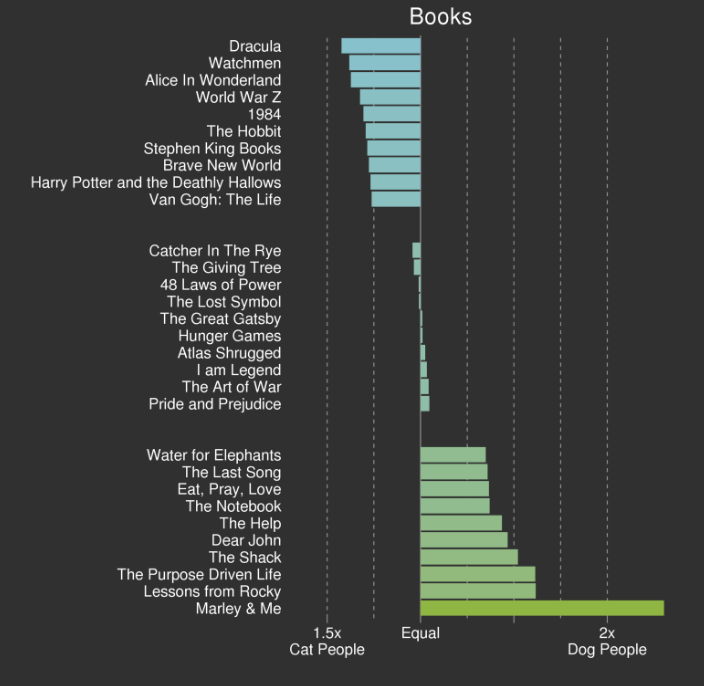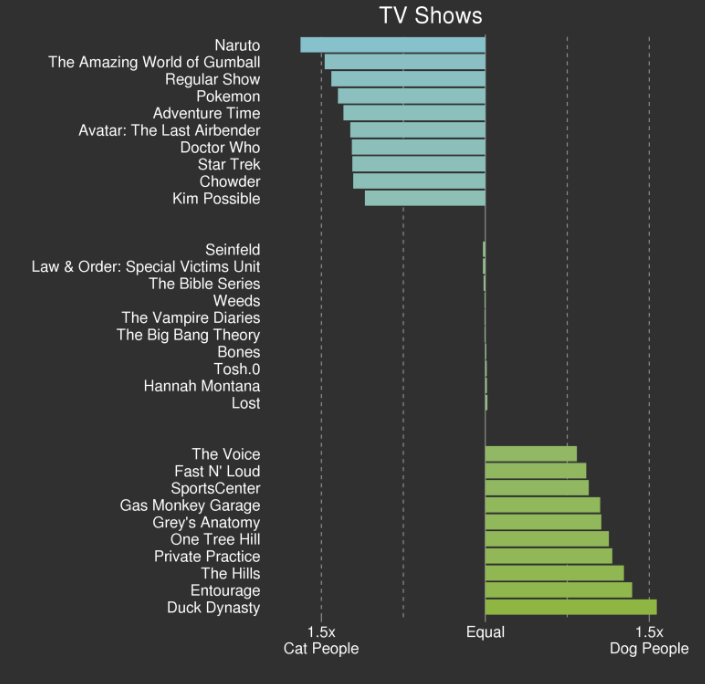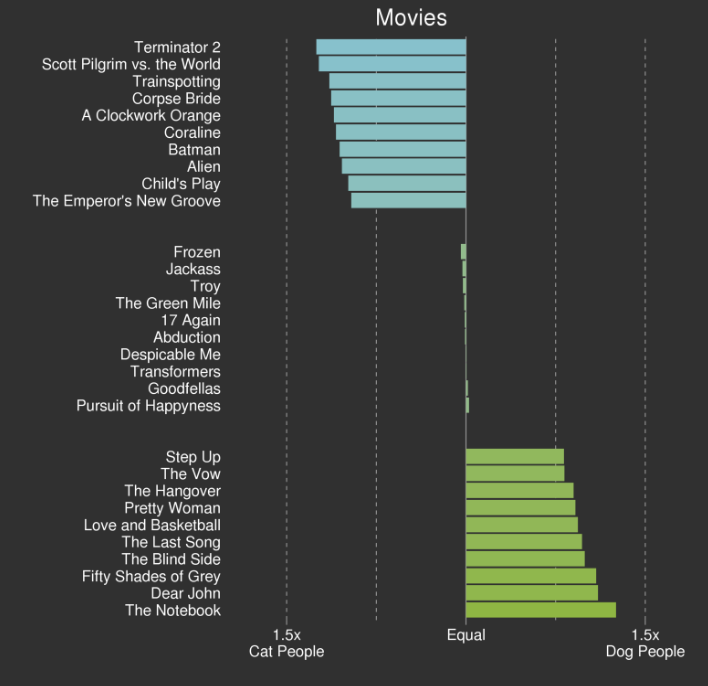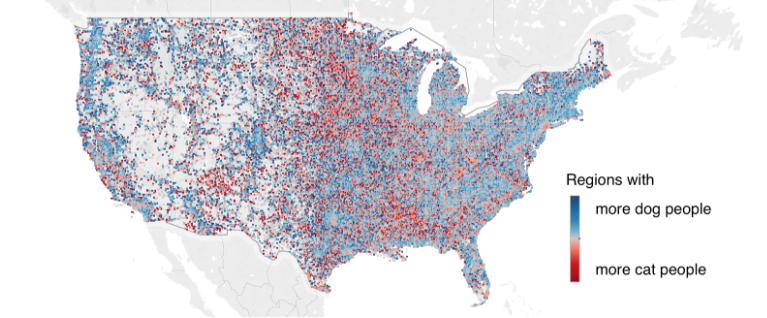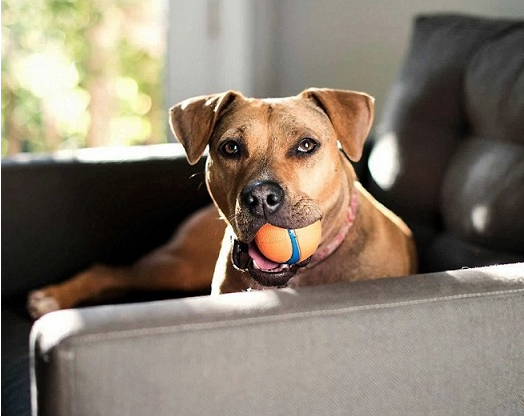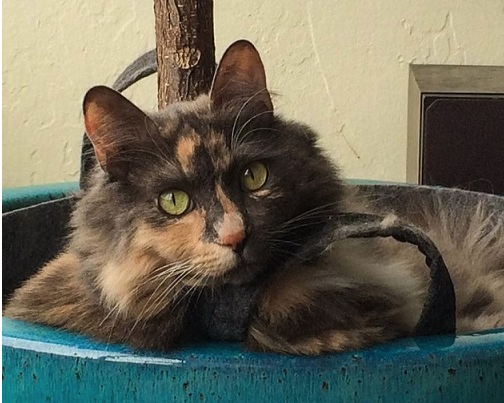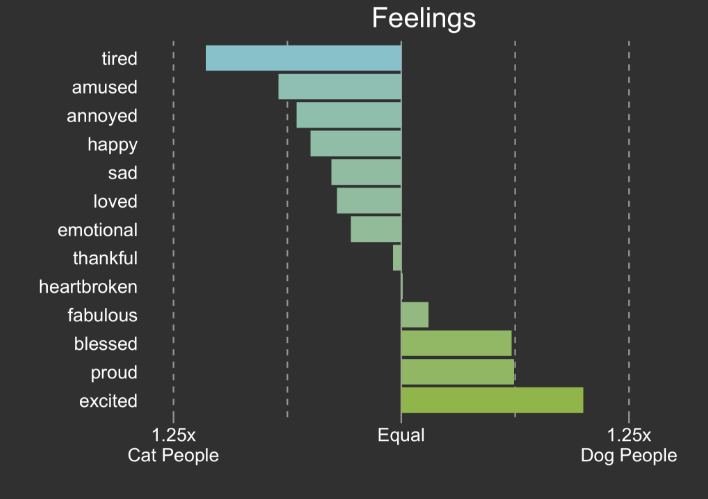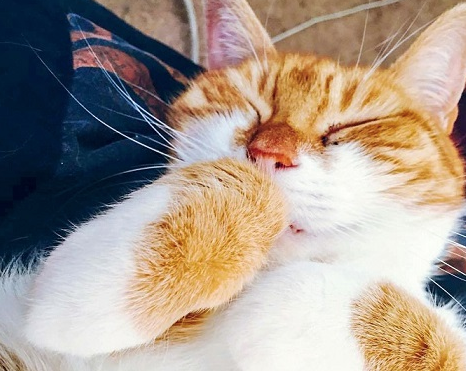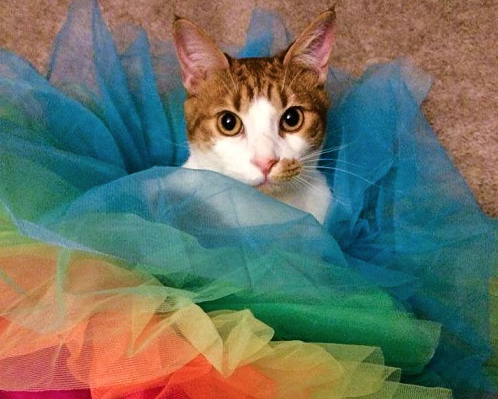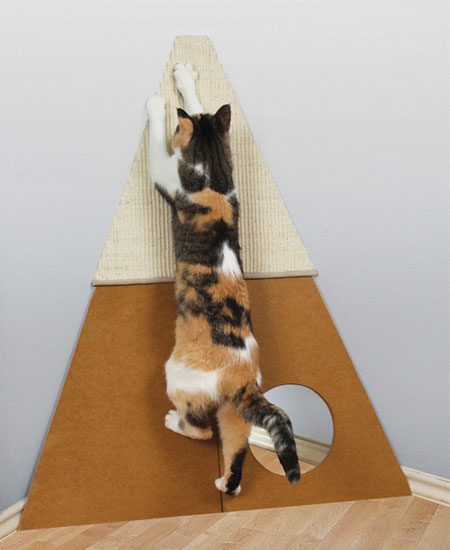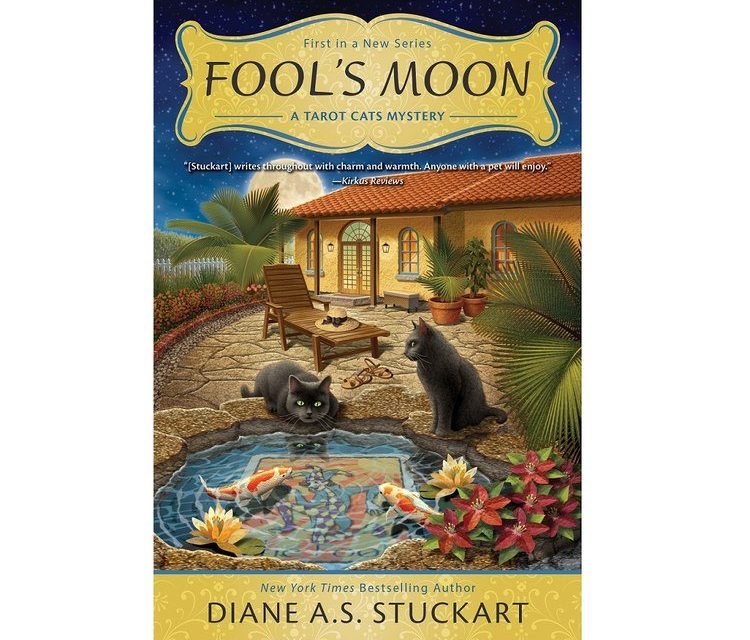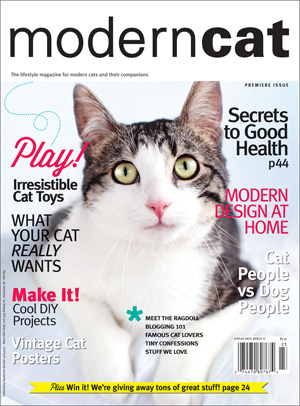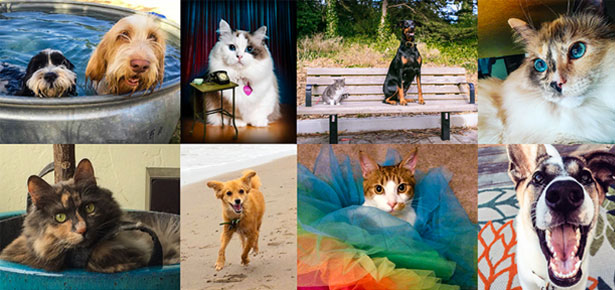

Cat People, Dog People—There Really Is A Difference, Facebook Study Shows
Facebook study finds stereotypes are true: cat lovers are more independent than dog people and more!
Are you a cat person or a dog person? Does your answer really have anything to do with who you are as a person? Facebook wanted to find out. Using their unique research capabilities (think status updates and photo uploads) Facebook was able to drum up some interesting data on what differentiates cat and dog people—and just how similar we really are to our animal companions.
To start: Who has more friends? Who’s more likely to be single? What TV shows do we curl up to watch together? In order to answer these questions Facebook dug their claws into aggregate, de-identified data from a sample of about 160,000 people in the United States who shared photos of cats, dogs, or both. Here are their results.
Miss Ivy and Cammy, pets of a Facebook employee on the recruiting team who is both a cat-person and a dog-person.
Dog people have more friends
Yep, the stereotypes are true: dog people are more outgoing, measured in terms of Facebook friends. On average, dog people have 26 more Facebook friends than cat people. Like their extroverted pets, dog people make more connections online. On the other hand, cat people get invited to more events, so they’re putting their friendships to good use!
Like their owners, Kirby and Zelda are good at making friends, especially when there’s water involved.
Not surprisingly, there are traces of homophily: Cat people tend to be friends with other cat people and dog people with other dog people. Specifically, cat people are 2.2 times more likely to befriend other cat people when compared to randomly chosen friends from the general population. However, that does not mean they are averse to dog people: They also befriend 1.8 times as many dog-people friends as expected. So, cat people like other animal-friendly people. The corresponding ratios for dog people are elevated but not as high as for cat people: Dog people befriend 1.8 times as many dog people as random, and 1.6 times as many cat people as random. Some of these differences may be due to geographic proximity, discussed below.
Though dog people have more friends, Mizu goes to all the parties.
Dating: Yes, cat people are more likely to be single
How true is the stereotype of the older, female cat-lover being single? How about partial credit. Yes, cat people are more likely to be single than dog people (based on their profile relationship status). Maybe those extra 26 friends helped dog people find a mate! About 30% of cat people are single, compared to just 24% of dog people. But unlike the stereotype, being single and a cat lover isn’t related to age or gender — younger cat-lovers, and male cat-lovers of all ages are just as likely as older female cat-lovers to be single. Some of these relationship results may be due to urban/rural differences in where cat- and dog-people live (discussed below).
Milo doesn’t have time for dating when there’s such a fluffy tail to be caught right here.
Books, TV, and movies
Cat people seem to have more indoor activities: They disproportionately like books, TV, and movies (measured in terms of Facebook Page likes). And cat people are especially fond of fantasy, sci-fi, and anime, while dog people like love stories and things about, well, dogs.
The charts below show the proportions of fans for books, TV shows, and movies, comparing the ratio of dog- to cat-people fans, accounting for the fact that there are slightly more dog people on Facebook. Books that cat people disproportionately like, such as Dracula and World War Z have longer blue bars off to the left, while books that dog people disproportionately like, such as Marley and Me all have longer green bars off the the right. If equal proportions of cat and dog people like a book, like, say, Hunger Games, no bar is visible.
At least we can all agree on The Great Gatsby, Seinfeld, and Frozen.
Sample of books disproportionately liked by cat- (blue bars to the left) or dog-people (green bars to the right). Books equally appreciated by both, such as The Great Gatsby, have no visible bars. Cat people are disproportionately fans of fantasy and dystopia, while dog people really like books about dogs (Marley and Me, Lessons from Rocky). Scores are based on the proportion of Facebook Page fans.
Sample of TV shows disproportionately liked by cat (blue bars to the left) or dog-people (green bars to the right). Shows equally appreciated by both, such as Seinfeld, have no visible bars. Cat people are disproportionately fans of anime, while dog people disproportionately watch shows with colorful characters. Scores are based on the proportion of Facebook Page fans.
Sample of movies disproportionately liked by cat- (blue bars to the left) or dog-people (green bars to the right). Movies equally appreciated by both, such as Frozen, have no visible bars. Cat people are disproportionately fans of sci-fi and fantasy, while dog people show a preference for love stories. Scores are based on the proportion of Facebook Page fans.
Where they live and spend time
Some of the preferences for TV shows, books, and movies may reflect where dog and cat lovers live: dog people are more concentrated in rural areas, where there’s more space for a dog to exercise, while cat people are more often found in cities (though many dog and cat lovers live in both kinds of places).
Dots represent the ratio of dog to cat people in a region. Cats are more prevalent in cities (red areas), while dogs are more prevalent in rural areas (blue).
While dog people have more friends, there isn’t evidence that they’re checking into more places than cat people (maybe everyone’s too busy catching Pokémon). Cat and dog people check in to roughly the same number of places each week.
Miss Hope enjoys quiet time with her orange ball in the backyard.
Juniper checks in regularly at this big blue plant pot.
Moods, or who’s a grumpy cat?
Does Grumpy Cat’s ennui extend to her owners? And what about Garfield’s love of napping? Examining de-identified, aggregate data from Facebook’s feelings feature (where you can annotate a status update with moods like “feeling excited” or “feeling blue”), Facebook found that cat people are indeed disproportionately likely to say they’re feeling tired, but also happy and loved. Overall, cat people seem to express a wider variety of feelings on the site. On the other hand, dog people are more likely to express excitement or pride.
Feelings disproportionately expressed by cat- (blue bars to the left) and dog-people (green bars to the right) in annotations on their status updates. Cat people are more likely to say they’re tired (like Garfield) but also happy and loved. Dog people are proud and excited.
Who appreciates a good nap.
Stanley has good fashion sense.
Inot loves the snow.
References
[1] Pet photo credits: Nina Ignacio (Miss Ivy and Cammy), Melanie Weinshall (Kirby and Zelda), Ashley Seto (Mizu), Emilia Dallman (Milo), Mike Develin (Gracie), Nina Ignacio (Lazer), Frank Stratton (Miss Hope), Moira Burke (Juniper), Andrew Valencia Yan (Sadie), Dusty Seu (Who), Tara Welch (Rory), Nick Merola (Noe), Caitlyn Mason (Rue), Nina Veress Langenfeld (Stanley), Olga Surmach (Inot).
Via Facebook Research.
Join the newsletter and never miss out on cat content again!
"*" indicates required fields
By clicking the arrow, you agree to our web Terms of Use and Privacy & Cookie Policy. Easy unsubscribe links are provided in every email.






